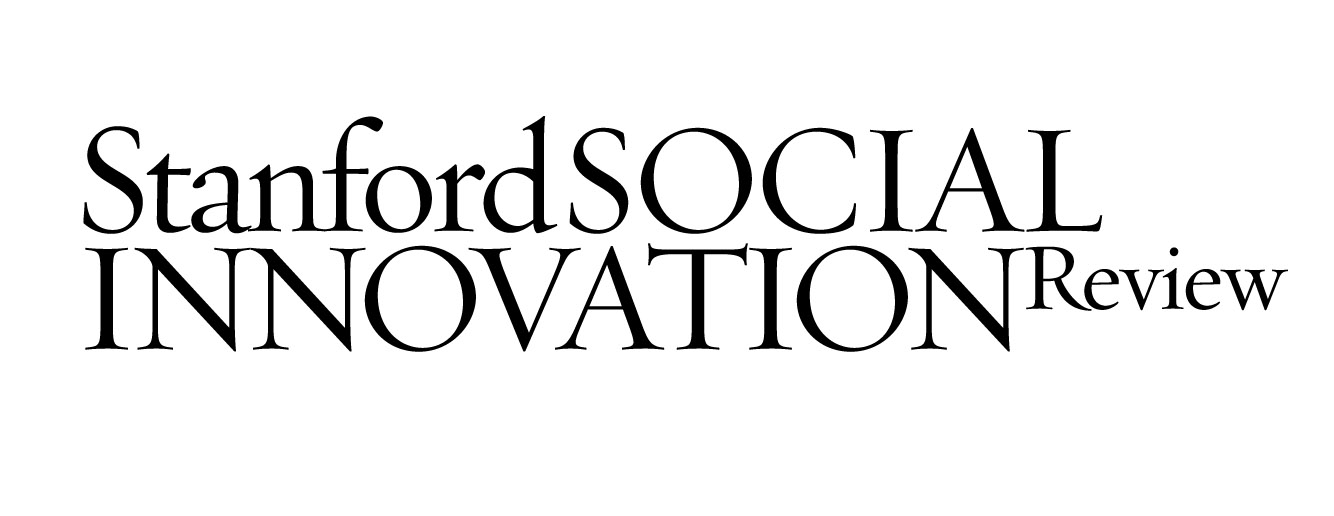
By Devin Briski
Stanford Social Innovation Review (SSIR) has been called the “social entrepreneur’s Bible”—it is a top resource for impact leaders to stay up-to-date on the latest thinking in the social sector. Covering multi-sector solutions relevant to nonprofits/NGOs, foundations, government, impact investors, and social enterprises, SSIR’s mission is to make cutting edge research and new theories on social change accessible to leaders like you. Landmark articles like “Collective Impact” and “Social Entrepreneurship: The Case for Definition” have spawned new thinking around the most important ideas for the sector and inspired organizations to adapt the way they work.
SSIR is offering a $10-off discount (subscription price of only $39.95 per year) for SOCAP conference attendees to stay up-to-date on the latest thinking in social innovation. Just click on this link to take advantage of the offer!
Here are the 10 articles every SOCAP attendee should know.
1. The Power of Lean Data, Winter 2016
Published in the most recent issue of SSIR, this feature merges two keystone principles in social innovation—lean experimentation and data-driven impact. Based on research conducted at Acumen, Sasha Dichter, Tom Adams, and Alnoor Ebrahim lay out how it’s possible for organizations to inexpensively gather high-quality data to inform their strategic decisions.
2. Social Entrepreneurship: The Case for Definition, Spring 2007
A mainstay on SSIR’s most-read list, this feature has become a foundational piece in social entrepreneurship courses globally. Sally Osberg and Roger Martin present a rigorous definition of activities that qualify as “social entrepreneurship,” in addition to arguing the necessity for exclusive definition. They expound on this article in recently published book, Getting Beyond Better: How Social Entrepreneurship Works.
3. The Promise of Lean Experimentation, Summer 2015
Lean experimentation is an established practice in the for-profit sector for testing the market viability of new products. Peter Murray and Steve Ma adapt this methodology for the social sector, laying out a process for leaders of social change to test, evaluate, and refine new programs and ideas with the potential for ground-breaking change.
4. The Role of Brand in the Nonprofit Sector, Spring 2012
Brands like Amnesty International and Habitat for Humanity are among the most recognizable in the world. Yet, nonprofits have historically only used brands as a tool for fundraising. In this feature, Nathalie Kylander and Christopher Stone present the “Nonprofit Brand IDEA,” a framework for how brand can play a cohesive role in strategic thinking for nonprofits. This article inspired the book, The Brand IDEA: Managing Nonprofit Brands with Integrity, Democracy, and Affinity.
5. The Dawn of System Leadership, Winter 2015
The popular trope of “leadership” is a strong head making unilateral decisions. In this feature, author of The Fifth Discipline Peter Senge, Hal Hamilton, and John Kania argue for a new conception of leadership that is capable of catalyzing groups for collective action.
6. Disruption for Good, Spring 2015
It’s undeniable that technology has unleashed a number of possibilities for fundraising, evaluation, and more. Laura Arrillaga-Andreessen, author of Giving 2.0: Transform Your Giving and Our World, explores how rapid advances in technology have disrupted traditional philanthropy, making it more rational, effective, collaborative, transparent, and democratic.
7. In Search of the Hybrid Ideal, Summer 2012
One potent tool of the social entrepreneur is to bring a market-based mentality to issues historically addressed by charitable organizations. In this feature, Julie Battilana, Mathew Lee, John Walker, and Cheryl Dorsey examine the rise of hybrid organizations that don’t fall into traditional nonprofit or for-profit categories, and examine the unique challenges they face integrating these legacy models.
8. When Can Impact Investing Create Real Impact?, Fall 2013
Impact investing is a hot topic among social innovators, and one of the fastest growing sectors of the impact economy. But this article by Paul Brest and Kelly Born argues that, although it is possible for impact investors to achieve social impact along with market returns, it is not easy to do and doesn’t happen nearly as often as many boosters would have you believe. Read responses to the article published by SSIR here.
9. The Rise of Gender Capitalism, Summer 2014
Gender inclusive companies are more successful, and women’s participation in the workforce has lead to measurable economic growth. In this article, Sarah Kaplan and Jackie VanDerBrug outline the concept of “investing with a gender lens,” a flexible framework that allows both for-profit and for-purpose organizations to invest while driving gender equality.
10. Collective Impact, Winter 2011
Since its publication in 2011, “Collective Impact” has become more than just an article—it’s become a movement, spawning organizations like the Collective Impact Forum. The original article by John Kania and Mark Kramer defines the need and outlines a framework for organizations to coordinate efforts across sectors in order to achieve large-scale impact.
Take advantage of the $10-off discount here!
 Devin Briski is publishing assistant at Stanford Social Innovation Review. She attended Columbia University, where she wrote and edited for Columbia Daily Spectator. Her work has appeared in SSIR Online, The Ventured Life, Inside New York, and Eater.
Devin Briski is publishing assistant at Stanford Social Innovation Review. She attended Columbia University, where she wrote and edited for Columbia Daily Spectator. Her work has appeared in SSIR Online, The Ventured Life, Inside New York, and Eater.




